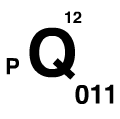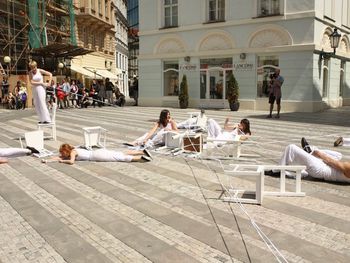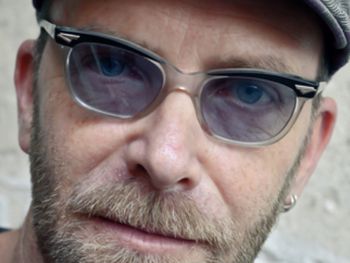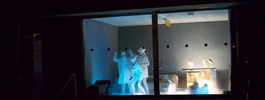

2015 » Serbia » Student Section
| Curator: | Curatorial team: Tatjana Dadić Dinulović, scene design theorist; Oliver Frljić, theatre director; Marko Lađušić, sculptor; Janko Ljumović, theatre producer; Sanja Maljković, architect and scene designer; Vesna Mićović, photographer; Dobrivoje Milijanović, sound designer; |
| Designer / Architect of exhibition: | Student author team and Curatorial team |
Process, or What DOES Matter to Me
Serbia’s presentation in the Student Section at the 2015 Prague Quadrennial is inspired by the phenomenon of politics – its position and importance in contemporary society and its relationship to art and culture. Concurrently, the exhibition is dedicated to the notion of “process” in its broadest sense. This includes a direct reference to Franz Kafka’s key work Der Prozess (Kafka’s House is the exhibition venue), as well as an attempt at understanding the creative processes in contemporary art and culture that determine the social, political, economic and ideological character of today’s world, and Serbia’s place within it.
The idea for this work, particularly its subtitle, evolved from students’ reflections about their place within society – specifically, their personal thoughts on their professional futures. In a region where politics and history have always been determinant values of life, at a time when previously existing values have disintegrated without the establishment of new ones, these students’ central question is one of identity, of (dis)orientation with regard to responsibility, goals and existence in general. In this sense, the work acts as a creative research platform for students from different backgrounds to address these topics.
Out of 68 candidates from various faculties in Serbia, 15 participants were chosen through a two-stage public competition. The students first researched their roles within contemporary society through self-recorded interviews, then contextualised their personal interpretation of the overall theme and sub-theme. Special attention was paid to individual interpretations of “performativity” in relation to their understanding of terms such as “theatre”, “performing arts”, “performing space”, “performance” and “exhibition”. They were asked to examine these terms broadly, exploring and applying all available media and forms of expression. Since Kafka’s House was intentionally chosen to inspire and provoke, students were required to engage in an active dialogue with the physical environment and their own internal dialogue within that space.
The final work represents the outcome of a complex creative process in which the exhibition structure is defined at all possible levels; from semantics to technical production. In other words, questions of development, interpretation or reinterpretation, as well as ways of presenting the work(s) remain open until the encounter with the public. Importantly, this is a work of synthesis, created under the mentorship of a curatorial team and with the support of artistic and technical workshops, including the creation, production and realisation of the exhibition.









